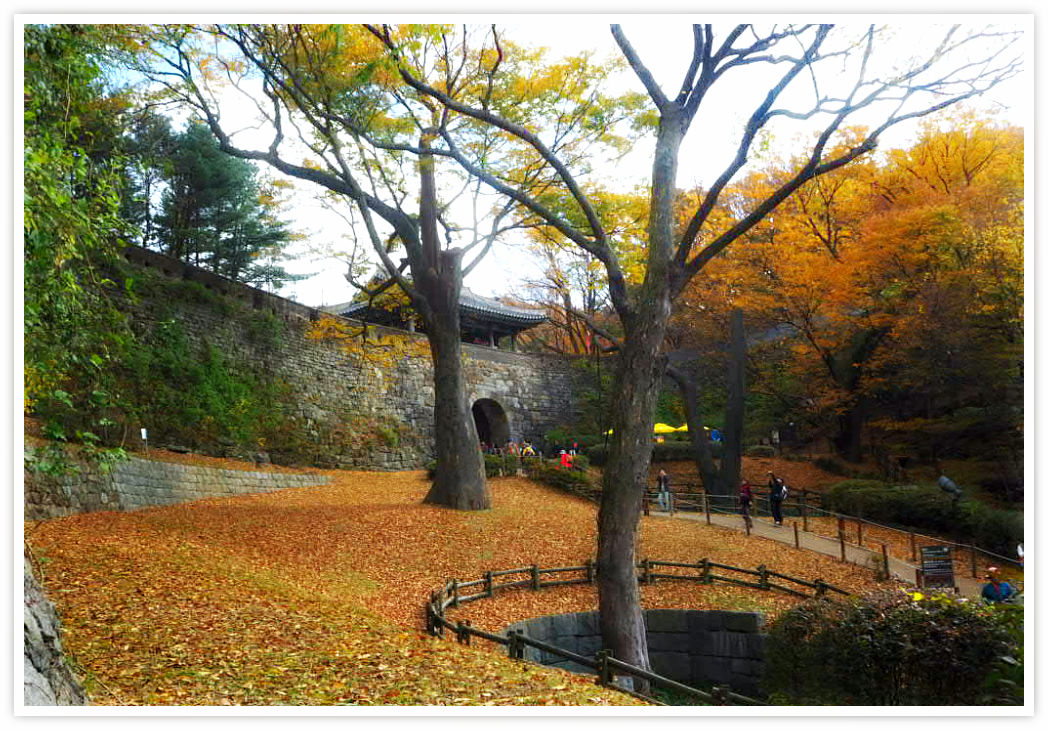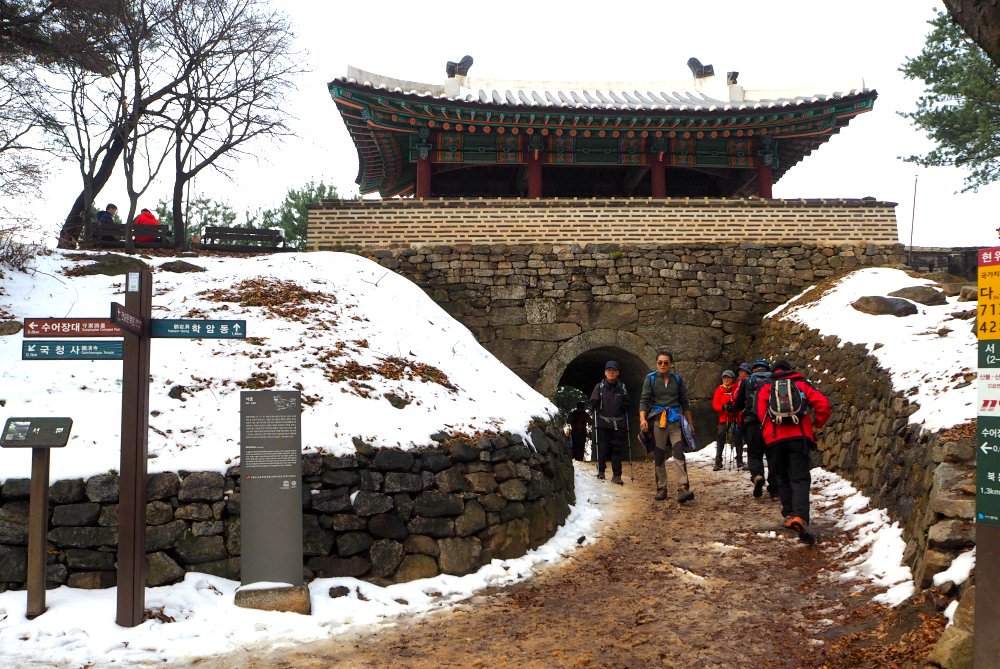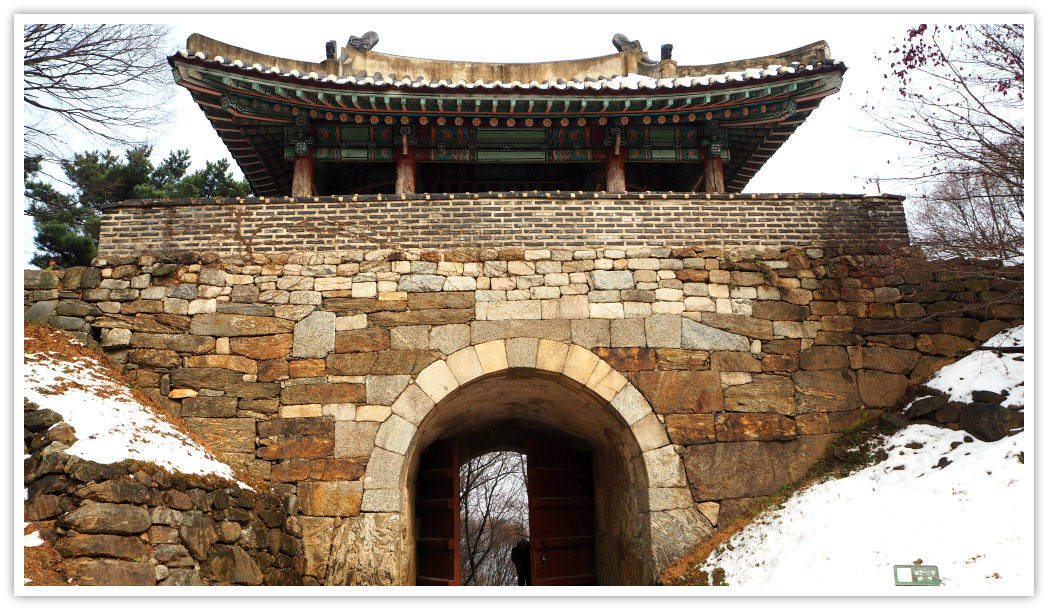Pohang Janggi-eupseong Fortress
 The wall of Pohang Janggi-eupseong Fortress
The wall of Pohang Janggi-eupseong FortressPohang Janggi-eupseong Fortress
Pohang Janggi-eupseong Fortress, a historic gem in South Korea, is a testament to the region's rich cultural heritage.
The fortress, built during the Joseon Dynasty, has stood the test of time and remains a fascinating attraction for history buffs and tourists alike.
From the imposing walls that rise high into the sky to the intricate details that adorn its gates, exploring this ancient fortress is like stepping back in time.
So, let's dive into the historical background and present status of the Janggi-eupseong Fortress in Pohang, South Korea.
Historical Background
 The West Gate was used for critical logistics and communication
The West Gate was used for critical logistics and communicationThe Janggi-eupseong Fortress is a remarkable historical site from the 17th century. It was built during the Joseon Dynasty, which ruled Korea from 1392 to 1910.
The fortress was constructed to defend the region against foreign invasions and served as a crucial military base, much like other fortresses that guarded the east coast of Korea.
The fortress is an impressive architectural feat that encircles an area of approximately 1,440 meters. It is situated on the eastern ridge of Dongaksan Mountain near the Janggicheon Stream.
The fortress has three main gates, each guarded by a vigilant barbican. These gates were strategically placed to protect the fortress from attackers who tried to enter from different directions.

Walking through the gates of the Janggi-eupseong Fortress today, one can truly appreciate the impressive engineering and design skills of the architects who built it.
The fortress has withstood the test of time and has been preserved as a national treasure.
Visiting the Janggi-eupseong Fortress is a must for anyone interested in Korean history and architecture. It offers a glimpse into the region's past and serves as a reminder of the country's rich cultural heritage.
 A sample of traditional resting structure inside the fortress
A sample of traditional resting structure inside the fortress A sample of traditional houses inside the fortress
A sample of traditional houses inside the fortress The local government is preserving the traditional structures that existed inside the fortress
The local government is preserving the traditional structures that existed inside the fortress Traditional thatched-roof houses of the older Korea
Traditional thatched-roof houses of the older KoreaThree Main Gates of Pohang Janggi-eupseong Fortress
The Janggi-eupseong Fortress is a historic fortress in South Korea. It has three main gates, each with unique features and purposes.
Dongmun (East Gate): The Dongmun, also known as the East Gate, is located on the eastern side of the fortress, facing the East Sea. It is the entrance and exit of the fortress for military personnel and visitors.
The gate is beautifully designed and offers picturesque views of the sea. The Dongmun played a critical role in maintaining the safety of the fortress as it was the first line of defense against invaders from the sea.
 East Gate
East GateSeomun (West Gate): The Seomun, also known as the West Gate, is positioned on the western side of the fortress. It is the primary access point to the fortress from the landward direction.
This gate was crucial for logistics and communication, making it an essential point of defense during times of war. The Seomun is also unique in its design, featuring an arched entrance and walls that are several meters thick.
 South Gate
South GateNamdaemun (South Gate): The Namdaemun, also known as the South Gate, is the southern gate that allows passage to and from the fortress.
It played a significant role in connecting the fortress with the surrounding area, making it an essential trade and cultural exchange point. The Namdaemun is also designed with several layers of walls and gates to ensure maximum security and defense.
Overall, these gates' strategic placement and unique features ensured effective defense and facilitated movement within the fortress.
Three Main Gate's Features & Functions
 Pohang Janggi-eupseong Fortress
Pohang Janggi-eupseong FortressThe Janggi-eupseong Fortress has three primary gates, each with its unique design and function.
Dongmun, the east gate, features a simple and functional design. It is a wooden gatehouse with a sloping roof flanked by stone walls on either side.
Dongmun faced the East Sea as the eastern entrance, allowing access for military personnel, supplies, and visitors. The gatehouse provided shelter for guards and facilitated communication.
The wooden gatehouse was constructed using timber, while the stone walls were made from locally quarried rocks.
The gatehouse had small openings for archers to shoot arrows at potential invaders, while the stone walls were sturdy and resistant to attacks.
 Pohang Janggi-eupseong Fortress - wooden floor and roof supporting structures
Pohang Janggi-eupseong Fortress - wooden floor and roof supporting structuresSeomun, the west gate, followed a similar architectural style to Dongmun. It had a wooden gatehouse with a gabled roof flanked by stone walls.
Seomun served as the western entrance, connecting the fortress to the landward side and allowing the movement of troops, supplies, and trade goods.
Like Dongmun, Seomun used timber for the gatehouse and local stones for the walls. The gatehouse had narrow slits for archers and guards, while the stone walls were thick and provided protection against attacks.
Namdaemun, the south gate, was more elaborate than the other two gates. Its gatehouse featured intricate wooden carvings and decorative elements.
As the southern entrance, Namdaemun connected the fortress to the surrounding area, facilitating trade and communication.
The gatehouse combined timber with ornate decorations, while the stone walls were robust. Namdaemun had larger openings for better visibility, allowing guards to monitor approaching visitors and potential threats.
Overall, these gates were functional and reflected the architectural aesthetics of their time. They played a crucial role in the fortress's defense and daily life. 🏰
Present Status
As of today, visitors can explore the remnants of the fortress wall that once surrounded and protected the ancient city.
The wall stretches for about 1 kilometer, and while some parts have collapsed over time, other areas include steep inclines that offer glimpses into the city's past.
Moreover, the location provides breathtaking scenic views of the surrounding landscape, including the nearby Janggicheon Stream and the East Sea. The tranquil sound of the stream and the refreshing sea breeze make it an ideal place to relax and enjoy the natural beauty.
If you plan to visit, it's worth noting that some locations mentioned in this itinerary are outside Pohang, so having a car is recommended.
However, the fortress is well worth the trip, as it's a testament to the region's rich and fascinating history.
Exploring the fortress and its surroundings offers a unique experience for those interested in discovering and learning about historical sites.
Pohang Janggi-eupseong Fortress is historically significant and provides a beautiful setting for visitors to appreciate. If you decide to explore it, enjoy the views and immerse yourself in its rich past! 🏰
Getting to Pohang Janggi-eupseong Fortress
There are a few different ways to get to the Pohang Janggi-eupseong Fortress area from Seoul.
One option is to fly from Seoul's Gimpo International Airport to Pohang Airport, which takes about an hour. From there, you can rent a car or take a taxi to the fortress, which is located about 20 minutes away.
Another option is to take a KTX train from Seoul Station to Dongdaegu Station, which takes about 2 hours. From there, you can transfer to a Mugunghwa train to Pohang Station, which takes about 1 hour and 20 minutes. Once you arrive at Pohang Station, you can rent a car or take a taxi to the fortress, which is located about 15 minutes away.
I hope this article helps you in any way. Have a safe travel!
- Home
- Gyeongsangbukdo Travels
- Pohang Janggi-eupseong Fortress
Get Exciting Activities
Book one of our exciting activities today to experience the thrill of a lifetime! Take advantage of this opportunity and secure your spot in advance.
Hotel Map Guide
Find your affordable, accessible, and comfortable hotel in Seoul at Agoda.Com. See the hotel map below...
Hotel Booking Guide
Find affordable and amazing hotels on Agoda.com using the search box below. Book now to enjoy great discounts and save!







New! Comments
What do you think about this page? Leave me a comment in the box below.